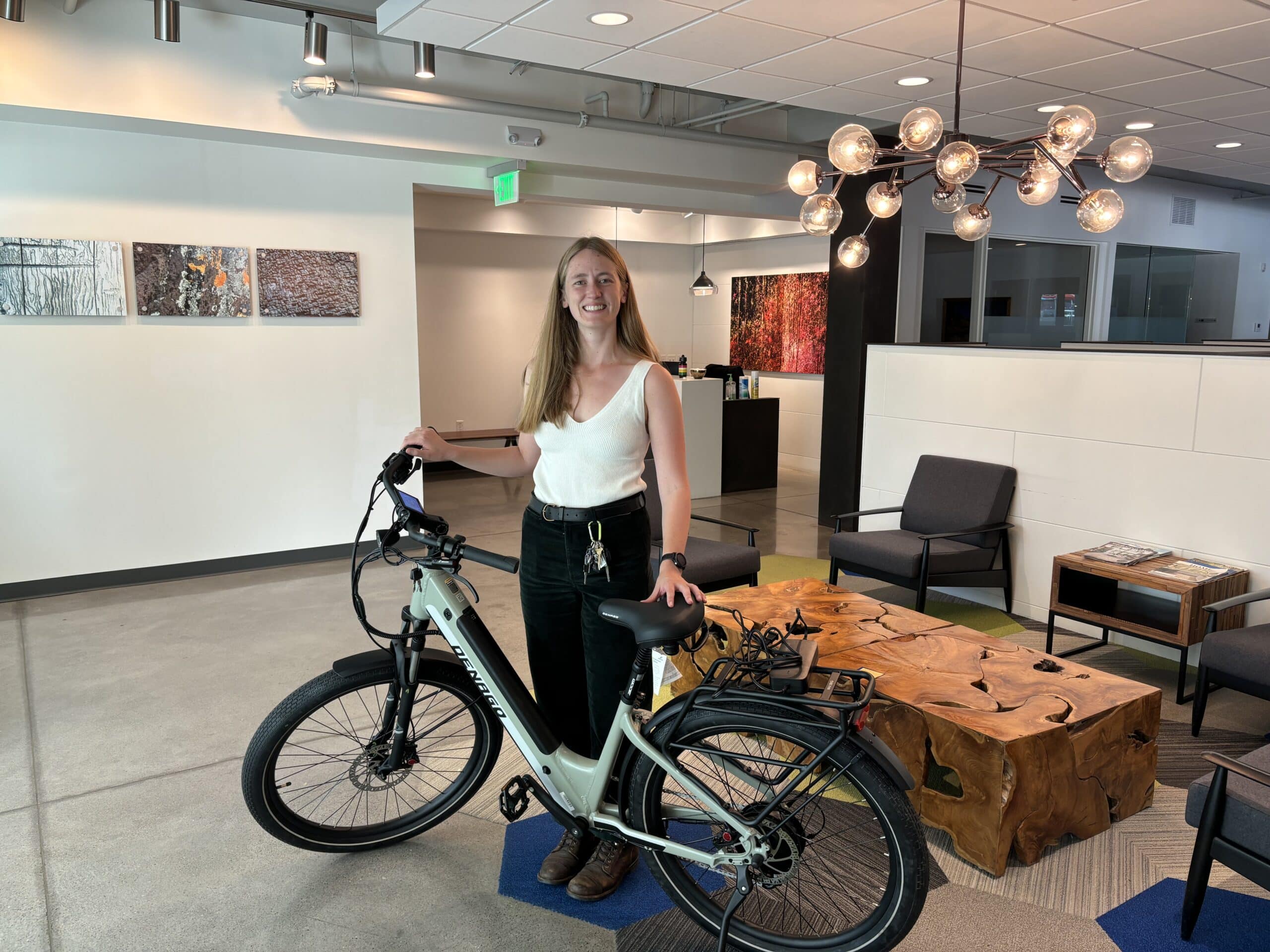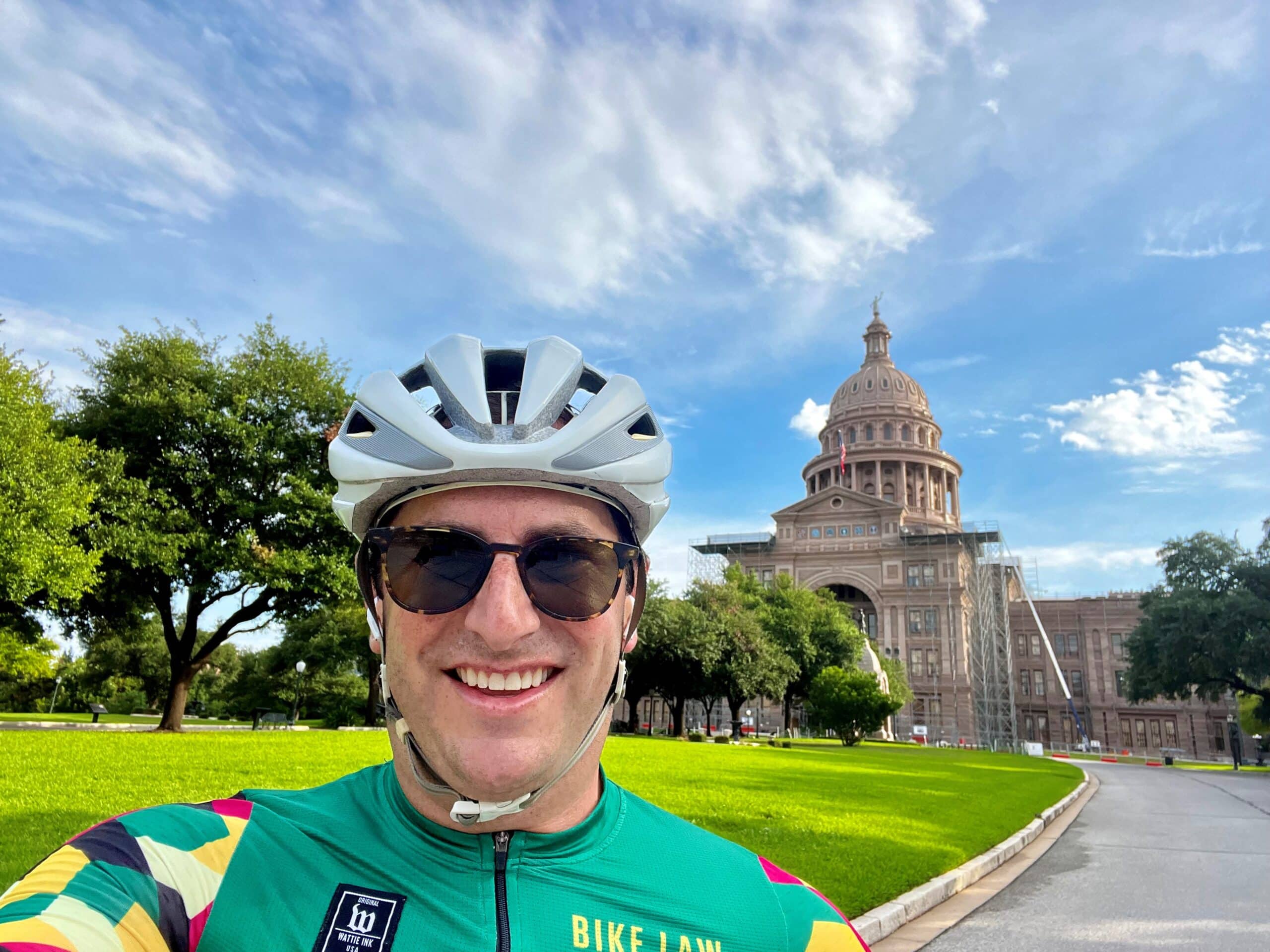Bike Law attorney Kurt Holzer makes a compelling case for the "Idaho Stop."
I’ve been representing cyclists in Idaho bike accidents for nearly 25 years. Many people are aware of our state statute that is referred to by many as the Idaho Stop Law. My experience, both on my bike and at my desk, has shown it’s a good law that has worked well.
In fact, the law has actually reduced the number of bike-car accidents in Idaho.
Under our law a cyclist can, when it’s safe to do so, treat a stop sign as a yield sign or a stop light as a stop sign. Here’s a Bike Law blog post on the Idaho Stop and a Wikipedia page about it. There’s also a video explanation of the Idaho Stop.
Although the Idaho Stop generates controversy, other jurisdictions study it regularly with an eye to adopting it. Given our success, it is really no surprise that other areas of the country want something similar.
- Some mountain towns in Colorado have adopted the rule.
- Most recently, the Board of Supervisors in San Francisco adopted the rule. However, the ordinance was vetoed by the mayor.
- A number of other state legislatures have considered but not adopted the Idaho Stop. The law has passed out of at least one chamber of the legislative bodies in some states, indicating support for it.
Debunking arguments against the Idaho Stop
The arguments against the rule tend to boil down to either it’s “not safe” or it’s “not fair.” Neither argument is particularly persuasive, in my opinion.
In my years representing cyclists, I have never seen a car v. bike collision or a bike v. pedestrian collision that was attributable to road users following the stop as yield statute.
That’s right, not once in the hundreds of bicycle collision cases I have investigated has the law created an incident.
Even politicians have learned of the benefits of the law. Adam Park, director of communication for Boise Mayor David Bieter, said the Idaho Stop has become something of an attraction for cyclists touring the area.
“Bicyclists come here and they immediately are just overjoyed with the knowledge that something they’ve done illegally in other places is legal here,” Park said in an article in the Toronto Star. “It allows them to flow more freely and still safely.”
A closer look at the Idaho Stop
Idaho’s law has been in place since 1982. Here’s what is appropriate cyclist behavior under the law:
When a cyclist approaches a stop sign, he or she should:
- Slow down and stop if required for safety;
- Yield the right-of-way to any motor vehicle in the intersection or any approaching vehicles that will create a hazard if the cyclist crosses the intersection; and
- Continue after appropriately slowing and yielding without stopping.
Allowing cyclists to do this is really about conservation of energy and recognizing the differences between bikes and cars.
When a bicyclist approaches a red light, he or she should:
- Stop;
- Yield to all other traffic; and
- Proceed through the red light with the appropriate caution.
Why does it make sense?
Having cyclists clear the intersection at a stop light avoids many unsafe interactions between cars and bicyclists. Obviously the cyclist has to use caution.
Among other things, the Stop as Yield law acknowledges the realities of cyclists traveling on roads with controls designed to handle motor vehicles. Regular traffic control mechanisms often fail to work with bicycles, since they are not large enough to trigger the road sensors. In addition, cyclists can easily yield the right-of-way without coming to a complete stop.
This law, in part, has allowed Idaho to lead the way in reducing bicycle accident rates. For example, in the year following the adoption of the law, bicycle accidents declined by 14.5 percent. And Idaho has regularly been among the lowest in the rate of bike/car fatalities as a percent of population among the states.
Other benefits of the Idaho Stop Law
Need more reasons to love this law? Here are several:
- Cyclists get in front of traffic and increase their visibility to motorists, which in turn allows motorists to operate their vehicles more prudently;
- Having cyclists “clear” an intersection before the light turns green reduces the potential for collisions in the intersection;
- The Idaho Stop reduces the costs to government by eliminating the need to pay for extra sensing equipment to detect bicycles at intersections;
- Because bikes are through intersections more quickly, the overall flow of traffic improves;
- Making bicycling easier and safer encourages people to choose this eco-friendly method of transportation;
- The Stop acknowledges the practical role of momentum in cycling.
Is the law ‘unfair’?
Just as ordinary “right turn on red” laws rely on the judgment of drivers, the Idaho Stop as Yield law relies on the judgment of cyclists. Judgment is something we all have to exercise all the time in using any form of transport.
A segment of the population feels the law is “unfair” because it grants “special rights” to cyclists. Of course, there are many rules that apply to specific forms of transportation: weight limits and different speed limits for trucks, rules allowing farm vehicles, and laws that require flagging, to name a few. There is the issue that some children may not understand how to safely apply the rules. But dealing with children and cycling safety is a complete realm of analysis unto itself.
Idaho has recently added questions about cyclists on roadways to its drivers’ license testing, which will help expand the knowledge of the statute. While this can’t eliminate all the misunderstanding about the law, greater education of the role of cyclists and motorists is of course a benefit.
Cyclists, likewise, need to follow the law. But that is true for every road user. Cars that don’t stop for pedestrians or blow through red lights and stops signs are things we all see with regularity. Cyclists, motorists and pedestrians are wrong to disobey the law, and the reality is that people do things wrong at times, no matter which mode of transportation they use.

Twice a masters criterium champion, Kurt Holzer was also the 2011 Idaho Trial Lawyer of the Year. He is the past President of the Idaho Trial Lawyers Association and currently serves as a Commissioner of the Idaho State Bar.
Kurt has represented dozens of Idaho cyclists for a variety of collision and product liability claims.








